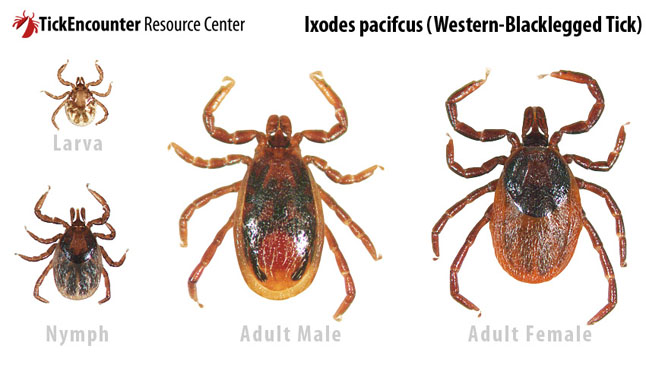
The early arrival of spring weather this year means many of us are spending more time enjoying the great outdoors. And we aren’t the only ones basking in the unseasonable warmth. The change in weather also brings out ticks – small bugs that feed on the blood of humans and animals and can sometimes transmit disease.
“Ticks are most often found in tall grass and wooded areas, so covering up before you head outdoors and checking for ticks on yourself, your children, and your pets after being outdoors are simple things that go a long way to prevent tick bites,” said Gwen Barker, Communicable Disease Specialist with Interior Health.
The most common tick species in the Interior Health region is the wood tick (Dermacentor andersoni), which does not carry the Lyme disease bacteria. The wood tick can carry other diseases such as Rocky Mountain spotted fever, although it is very rare. Some ticks also have toxins that can cause temporary muscle weakness and paralysis if attached for several days, but the symptoms fade once the tick is removed. Signs of many tick-borne infections can be quite similar and include fever, headache, muscle pain, and rash.
The tick species that carries Lyme disease (Ixodes pacificus) is more common in the coastal areas of BC, but may also be present in low numbers in the Interior. Less than one per cent of Ixodes ticks in B.C. carry Lyme disease. In addition to fever, headache, and muscle pain, people infected with Lyme disease will often develop a rash that looks like a “bull’s eye” target and expands from the site of the tick bite.
“Most tick bites do not result in illness; however, all tick bites should be cleaned, as infection can occur whenever there is a break in the skin,” added Barker. “It is important to watch for signs of tick-transmitted illnesses. Anyone who experiences a bulls-eye rash or other symptoms should see a doctor as soon as possible.”
Other precautions include:
- Keeping your lawn short and remove any fallen leaves and weeds;
- Keeping a buffer area such as wood-chip or gravel border between your lawn and wooded areas or stone walls. Any play equipment or play zones should be kept away from wooded areas;
- Trimming tree branches to allow more sunlight in your yard;
- Keeping wood piles and bird feeders away from the house; and
- Widening and maintaining trails on your property.
If you find a tick on yourself, a family member, or pet, wear gloves and gently remove it. Needle-nose tweezers can be used to gently grasp the tick close to the skin. Without squeezing, pull the tick straight out. Be careful not to crush the tick as this could cause it to inject its stomach contents into your skin. After removal, clean the area with soap and water. If you have concerns or need assistance removing a tick, please contact your family doctor or visit a walk-in medical clinic.
More information is available at:
HealthLink BC file: http://www.healthlinkbc.ca/healthfiles/hfile01.stm
BCCDC Lyme disease information: http://www.bccdc.ca/dis-cond/a-z/_l/LymeDisease/default.htm
Tick Talk video: http://www.bccdc.ca/dis-cond/a-z/_l/LymeDisease/ticktalk/ticktalkvideos/TickTalkVideoEnglish.htm



